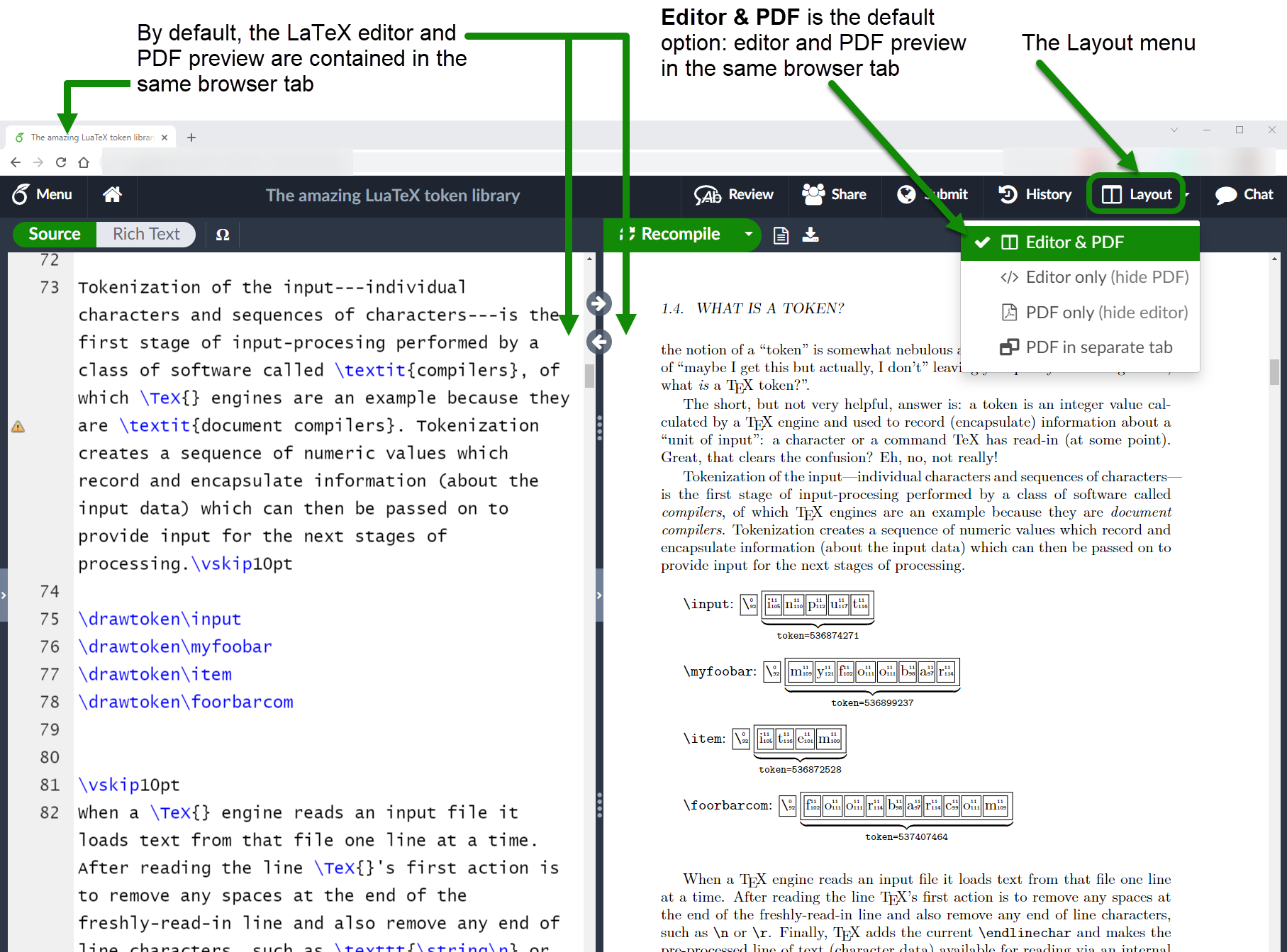How to use the Overleaf layout menu
This article explains Overleaf’s Layout menu which provides 4 options to configure your Overleaf workspace. Each of those options can be useful for particular use-cases, such as making presentations or using Overleaf on two separate screens.
Introduction
The following image shows the Layout menu with a checkmark next to the currently active option; here, it is the default setting of Editor & PDF:

The remainder of this article demonstrates each of the 4 options and the functionality they provide.
Editor & PDF (the default)
This default option uses a single browser tab to display the LaTeX editor and PDF preview. This arrangement works well if you have a large display screen with sufficient space to organize your work. If you are using a laptop connected to a large external screen, the PDF in a separate tab option, displaying the LaTeX editor and PDF preview in separate browser tabs, can be a more convenient configuration.

Editor only (hide PDF) and PDF only (hide editor)
If you wish to temporarily hide the PDF preview or LaTeX text editor, you can use the layout modes of Editor only (hide PDF) or PDF only (hide editor) and easily switch between them as required. The following short video demonstrates using, and switching between, these modes.
- TIP: When in the mode Editor only (hide PDF) the hidden PDF preview pane can be fully re-opened using the small arrow to the right of the source code window: this is demonstrated in the video.
PDF in a separate tab
This layout option uses separate browser tabs for the Overleaf text editor and PDF preview, making it possible to work with Overleaf on two screens; for example, viewing the PDF preview on a laptop screen with the LaTeX editor displayed on a second, much larger, external screen—providing a convenient way to edit the LaTeX text.
- Note: Both tabs have a Recompile button.
- Tip: Having the PDF preview displayed on a separate screen can be useful during video presentations, enabling attendees to focus on the PDF without becoming distracted by the source code, which is on another (unshared) screen.
The following short video demonstrates the PDF in a separate tab layout:
Jumping to the code or PDF location in separate tabs
Even with the PDF preview and code editor in separate tabs, perhaps on separate screens, you can still use the “jump to code” location or “jump to PDF” location features (provided by SyncTeX), as demonstrated in this short video clip: